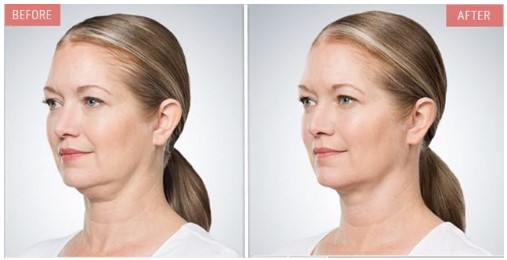In the world of cosmetic enhancements, the pursuit of a more refined appearance often leads to innovations that promise significant results with minimal invasiveness. One such breakthrough is Kybella, an FDA-approved injectable treatment designed to target and reduce submental fat, commonly known as a double chin. While Kybella has gained popularity for its ability to sculpt the jawline without the need for surgery, it is essential to understand the potential risks involved. Specifically, understanding why Kybella side effects happen is crucial for those considering this treatment.
At Beautiful Cosmetics MD, we are committed to providing our clients with safe and effective beauty solutions. As part of our commitment to education and transparency, this blog post will explore the key facts about Kybella side effects. By the end of this post, you will have a comprehensive understanding of what to expect from the treatment, why side effects occur, and how to minimize potential risks.
What Is Kybella and How Does It Work?
Before diving into the details of Kybella side effects, it is important to understand what Kybella is and how it functions. Kybella is an injectable treatment containing deoxycholic acid, a naturally occurring molecule in the body that aids in the breakdown and absorption of dietary fat. When injected into the fat beneath the chin, Kybella works by destroying fat cells, which are then naturally metabolized and eliminated by the body.
Common Kybella Side Effects
As with any cosmetic treatment, Kybella can cause side effects, some of which are more common than others. The most frequently reported Kybella side effects include swelling, bruising, pain, redness, and numbness at the injection site. These side effects are generally mild to moderate in severity and tend to resolve on their own within a few days to a week.
1. Swelling: The Most Common Kybella Side Effect
Swelling is perhaps the most common Kybella side effect, and it occurs as a result of the body’s inflammatory response to the injection. Swelling is typically most noticeable in the first few days following treatment and can persist for up to two weeks. This side effect is a natural part of the healing process and indicates that the treatment is working.
2. Bruising: A Typical Kybella Side Effect
Bruising is another common Kybella side effect and occurs due to the needle penetrating small blood vessels during the injection process. While bruising can be unsightly, it is usually mild and fades within a week or two. Patients are advised to avoid blood-thinning medications and supplements before treatment to minimize the risk of bruising.
3. Pain: A Manageable Kybella Side Effect
Some patients may experience pain or discomfort at the injection site. This Kybella side effect is usually mild and can be managed with over-the-counter pain relievers, ice packs, and resting the treated area.
4. Redness: A Temporary Kybella Side Effect
Redness at the injection site is a typical response to the treatment and usually subsides within a few hours to a couple of days. This Kybella side effect is often accompanied by warmth or tenderness in the treated area.
5. Numbness: A Kybella Side Effect That Can Persist
Numbness is a less common but possible Kybella side effect. Some patients report a temporary loss of sensation in the treated area, which can last for several weeks. This side effect occurs because the deoxycholic acid can affect nearby nerves, though this is generally temporary.
Why Do Kybella Side Effects Happen?
Understanding why Kybella side effects happen requires a closer look at how the treatment interacts with the body. Kybella works by breaking down fat cells, which triggers an inflammatory response. This response is part of the body’s natural healing process and is responsible for many of the side effects associated with the treatment.
6. The Role of Inflammation in Kybella Side Effects
Inflammation is a key factor in why Kybella side effects occur. When fat cells are destroyed, the body sends immune cells to the area to clean up the damaged tissue. This immune response results in swelling, redness, and tenderness—common Kybella side effects that indicate the body is processing the treatment.
7. Injection Technique and Kybella Side Effects
The technique used during the Kybella injection can also influence the occurrence and severity of side effects. If the injections are placed too superficially or too deeply, there is a greater risk of damaging blood vessels or nerves, leading to increased bruising, pain, or numbness. This underscores the importance of choosing a qualified and experienced provider, like those at Beautiful Cosmetics MD, to minimize the risk of Kybella side effects.
8. Patient-Specific Factors and Kybella Side Effects
Individual patient factors can also play a role in why Kybella side effects happen. Factors such as skin sensitivity, the amount of submental fat being treated, and overall health can influence how the body responds to the treatment. For example, patients with more fat in the treatment area may require multiple sessions, potentially increasing the likelihood of side effects.
9. Managing Kybella Side Effects
While Kybella side effects are generally mild and temporary, there are steps patients can take to manage them effectively. Applying ice packs to the treated area, taking over-the-counter pain relievers, and avoiding strenuous activity for a few days post-treatment can help minimize discomfort and swelling.
FAQs
Q: Are Kybella Side Effects Permanent?
A: Most Kybella side effects are temporary and resolve on their own within a few days to a few weeks. However, in rare cases, more serious side effects like nerve injury can occur, leading to prolonged numbness or weakness in the treated area. These instances are uncommon and typically associated with improper injection techniques.
Q: How Can I Reduce the Risk of Kybella Side Effects?
A: To reduce the risk of Kybella side effects, it is crucial to choose a qualified and experienced provider. At Beautiful Cosmetics MD, our practitioners are trained in the latest techniques to ensure safe and effective treatment. Additionally, following pre- and post-treatment instructions can help minimize side effects.
Q: When Should I Be Concerned About Kybella Side Effects?
A: While most Kybella side effects are mild, you should contact your provider if you experience severe pain, prolonged swelling, or signs of infection (such as fever or pus at the injection site). These symptoms could indicate a complication that requires medical attention.
Q: Can Kybella Side Effects Be Treated?
A: Most Kybella side effects do not require treatment and will resolve on their own. However, if side effects like pain or swelling are bothersome, your provider may recommend treatments such as anti-inflammatory medications or additional follow-up appointments to monitor your recovery.
Conclusion
Kybella offers a non-surgical solution for reducing submental fat, helping patients achieve a more defined jawline and increased confidence. However, like any cosmetic treatment, it is important to be aware of the potential side effects and why they happen. By understanding the role of inflammation, injection techniques, and individual patient factors, you can better prepare for the treatment and know what to expect.
At Beautiful Cosmetics MD, we prioritize patient safety and satisfaction. Our team is dedicated to delivering high-quality treatments while providing comprehensive education about potential risks and benefits. If you’re considering Kybella, we encourage you to schedule a consultation with one of our experienced providers to discuss your goals and learn more about how to minimize Kybella side effects.





